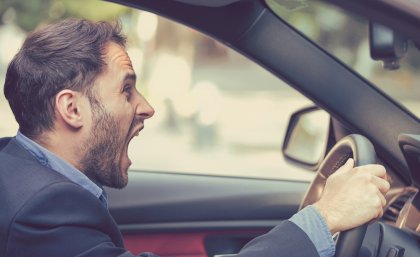
Why does a mild-mannered person flip out completely when they are cut off in traffic?
What is it that so infuriates us in a car that wouldn’t bother us in other scenarios?
A University of Queensland School of Psychology team led by research supervisor Lauren Shaw wants to know.
“Surveys show that many drivers are concerned about aggression, but there’s not a lot of research about why it occurs, particularly for those who aren’t normally aggressive or angry,” Ms Shaw said.
“To try to understand that, we’re looking at what can contribute to aggression, personality characteristics of drivers and situational circumstances and interpretations.
“Previously I’ve undertaken research where drivers cited rude, inconsiderate driving that displays poor etiquette as being a trigger for driving anger, more so than dangerous driving.”
Queensland drivers are being asked to take part in a 30- to 40-minute online survey about their thoughts and reactions to a range of common driving scenarios.
Ms Shaw described driver aggression as a “leading concern for Australian drivers”, with surveys revealing up to 86 per cent of Aussie drivers worried about increasing aggression in transit.
She said research suggested that drivers who reported experiencing driver aggression – either as a victim or perpetrator – were 158 times more likely to report having been involved in a crash.
“Road crashes can have devastating consequences, and if aggression can contribute to crashes then we need to understand the factors that contribute to it in order to prevent it,” Ms Shaw said.
“Some of the things we will explore in this latest survey include how stress affects driving behaviour.
“We’ll also delve into coping strategies and the tendency towards impulsivity.”
The sample question below provides an example of the scenarios presented in the survey:
Question: You are driving your vehicle in the far left lane and are stuck in a traffic jam. Out of nowhere, a car comes up from behind on the shoulder and tries to squeeze past you. How do you respond?
A) Nothing. Let the car squeeze in.
B) Make obscene gestures, or yell at the other driver as you prevent the driver from cutting in front.
C) Let the car squeeze in, but honk your horn and show your disapproval.
D) Honk your horn and close the gap to the vehicle in front to prevent the other car cutting in front.
To take part in the study, visit www.tinyurl.com/DrivingResearch.
Media: Ms Lauren Shaw, l.shaw@uq.edu.au; Robert Burgin, UQ Communications, r.burgin@uq.edu.au, +61 7 3346 3035, +61 448 410 364.
.jpg)



